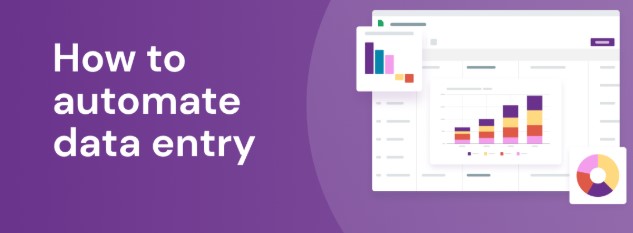Sure! Here’s a detailed blog post on the topic:
How to Automate Data Entry: A Complete Guide
Data entry is an essential part of many businesses, but it can be time-consuming, repetitive, and prone to human error. Automating data entry not only saves time and money but also improves accuracy and efficiency. In this blog, we’ll explore what data entry automation is, its benefits, tools, and step-by-step methods to implement it in your workflow.
What is Data Entry Automation?
Data entry automation refers to the process of using software or tools to automatically input data into systems or databases without manual human intervention. This can include extracting data from emails, documents, websites, forms, or spreadsheets and transferring it into your desired platform like Excel, Google Sheets, CRM systems, or databases.
Why Automate Data Entry?
Here are some key reasons businesses opt for automation:
- ✅ Time-Saving: Reduces hours of manual typing and copying.
- ✅ Error Reduction: Automated systems minimize human errors.
- ✅ Cost-Effective: Less manpower needed for repetitive tasks.
- ✅ Faster Decision-Making: Quick access to real-time, accurate data.
- ✅ Better Compliance: Consistent data entry helps maintain audit trails and regulatory standards.
🔧 Popular Tools for Data Entry Automation
Here are some tools commonly used to automate data entry:
| Tool | Features | Ideal For |
|---|---|---|
| Microsoft Power Automate | Drag-and-drop workflows, integrates with Excel, Outlook, SharePoint | Office automation |
| Zapier | Connects 5000+ apps, automates workflows | Web-based data transfers |
| UiPath | Robotic Process Automation (RPA) for enterprise | Large-scale business automation |
| Google Apps Script | Automates Google Sheets, Forms, Gmail | Google Workspace users |
| Python (with Pandas, Selenium, etc.) | Custom scripts for advanced automation | Programmers or data scientists |
How to Automate Data Entry: Step-by-Step Guide
Step 1: Identify Repetitive Data Entry Tasks
- List down tasks that involve manual copying of data.
- Prioritize tasks based on frequency and time spent.
Example: Entering daily sales data from emails into a Google Sheet.
Step 2: Choose the Right Automation Tool
- If you are using Google Sheets, Google Apps Script might be ideal.
- For transferring data between online apps, Zapier or Power Automate can help.
- If you need complex logic, go for UiPath or Python scripting.
Step 3: Map the Data Flow
- Define your data source (email, form, Excel file, website).
- Define your data destination (Google Sheets, database, CRM).
- Create a flowchart of how data should move from point A to B.
Step 4: Build and Test Your Automation
- Use templates or write custom scripts.
- Run the automation on sample data.
- Review results for accuracy and consistency.
Step 5: Schedule or Trigger the Automation
- Set time-based triggers (daily, hourly) or event-based triggers (on form submission).
- For example, in Zapier, create a “Zap” that triggers every time a new email arrives.
Step 6: Monitor and Improve
- Monitor the performance of your automation.
- Add error handling or validation checks.
- Make updates when your workflow changes.
Real-Life Use Case Example
Problem: A sales manager receives daily order reports via email.
Solution:
- Use Zapier to detect new email with “Order Report” in subject.
- Extract the attachment (CSV file).
- Use Google Apps Script to import data into Google Sheets.
- Automatically generate a dashboard or summary report.
Benefits After Automation
- 85% reduction in manual effort.
- Faster reporting for management decisions.
- Higher data accuracy leading to improved customer satisfaction.
Common Mistakes to Avoid
- Not validating automated data
- Choosing a tool too complex for your needs
- Ignoring updates and changes in source files or formats
- No backups or rollback plan in place
Conclusion
Automating data entry can dramatically improve your business’s efficiency and accuracy. Whether you’re a small business owner or a data analyst, there’s a solution that fits your needs. By choosing the right tools and following a structured approach, you can save time, reduce errors, and focus on what really matters — growing your business.
